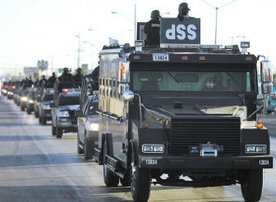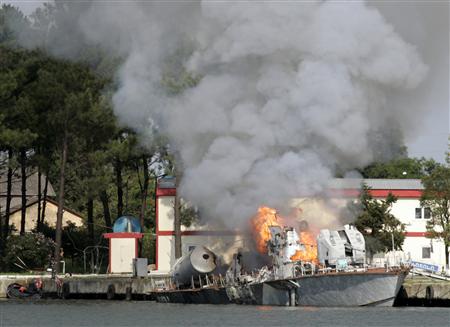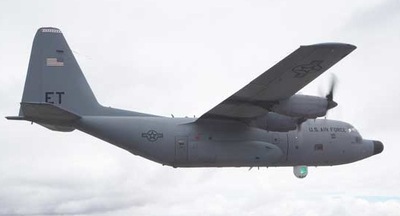
Federal police arrive to patrol Ciudad Juarez, Mexico, last week as part of a government effort to free Mexican citizens from a daily spectacle of assassinations, kidnappings and beheadings ordered by rival drug czars. MIGUEL TOVAR (AP)
AUSTIN – The state and federal governments have prepared contingency plans to deal with spillover violence from across the border as Mexican troops clash with ruthless drug cartels terrorizing Mexico.
“Anything you can think of that’s happened in Mexico, we have to think could happen here,” said Steve McCraw, Gov. Rick Perry’s director of homeland security. “We know what they’re capable of.”
A crackdown by Mexican President Felipe Calderon has turned Ciudad Juarez, just across the border from El Paso, into a war zone as federal troops battle feuding cartels.
Thousands of soldiers and agents have surged into the border city in the government’s latest effort to free Mexican citizens from a daily spectacle of assassinations, kidnappings and beheadings ordered by rival drug czars.
McCraw predicted that the violence in Mexico “will get worse before it gets better.”
Mexico’s active-duty armed forces number more than 130,000 and are being aggressively used to combat the cartels. But U.S. Sen. John Cornyn, R-Texas, told reporters last week that Mexico’s two largest drug cartels have fielded a combined army of 100,000 foot soldiers to battle not just government forces but also one another.
Read moreTexas makes emergency plans in case violence spills over from Mexico




 AP photo / Brennan Linsley
AP photo / Brennan Linsley


